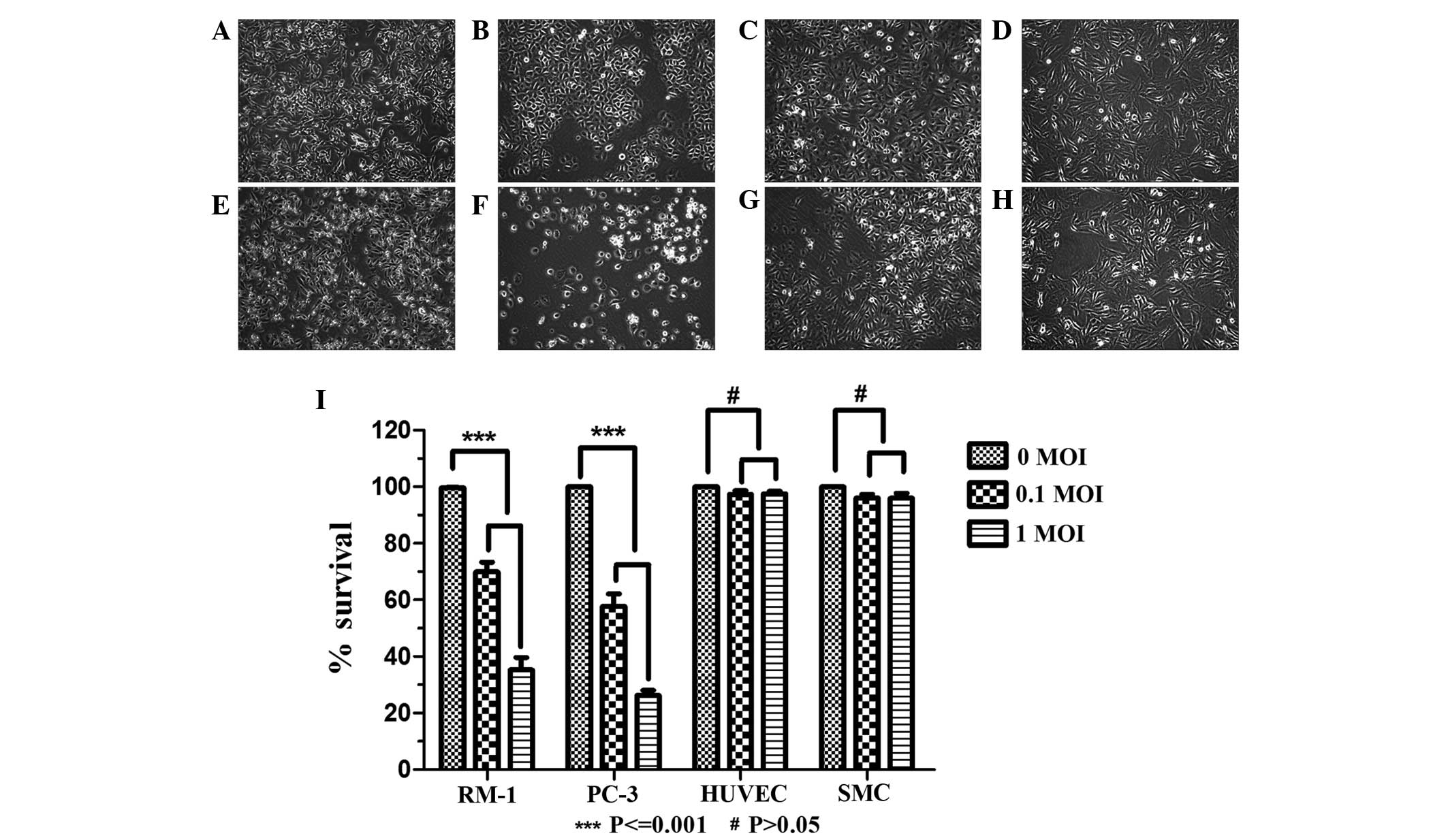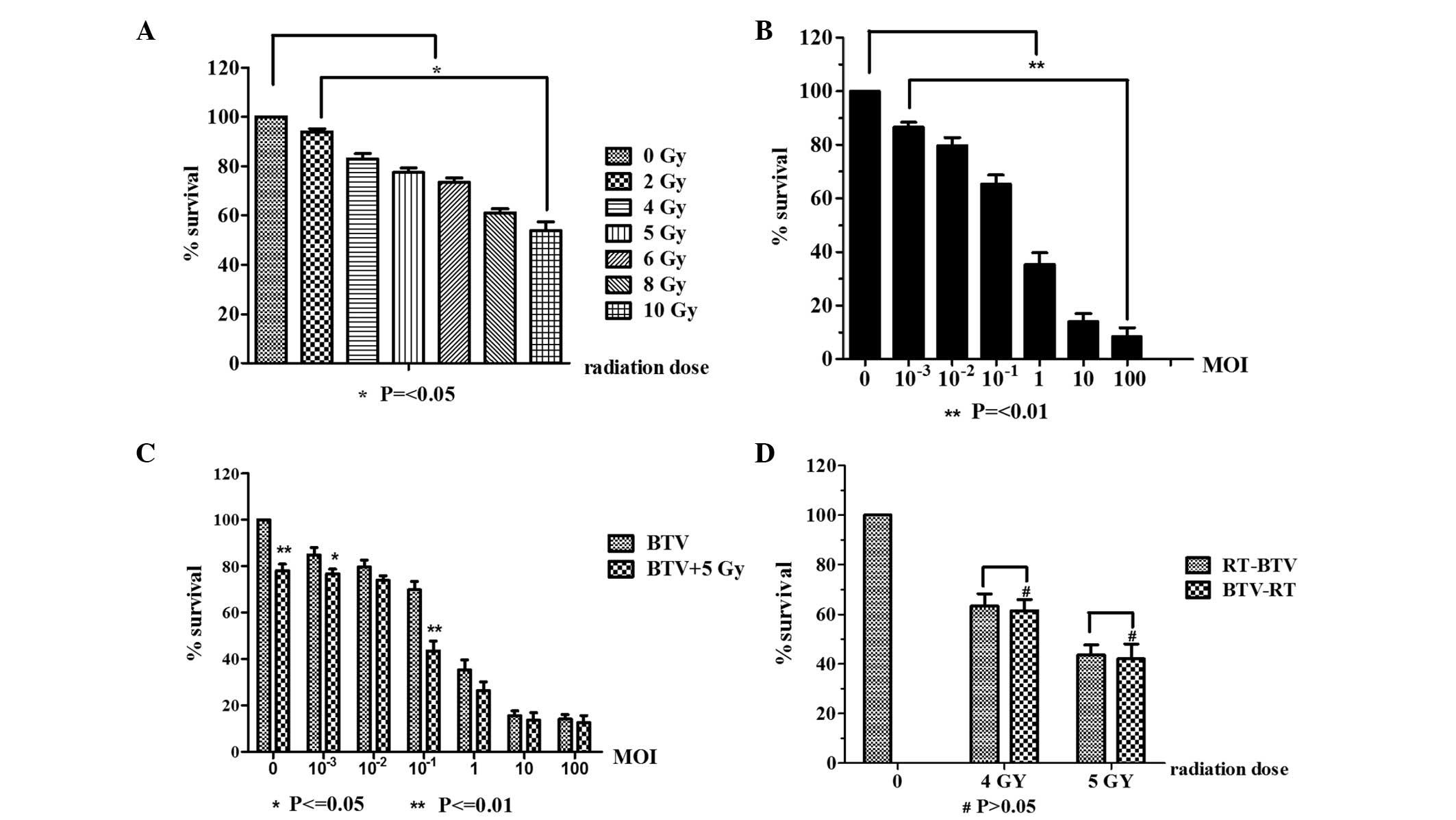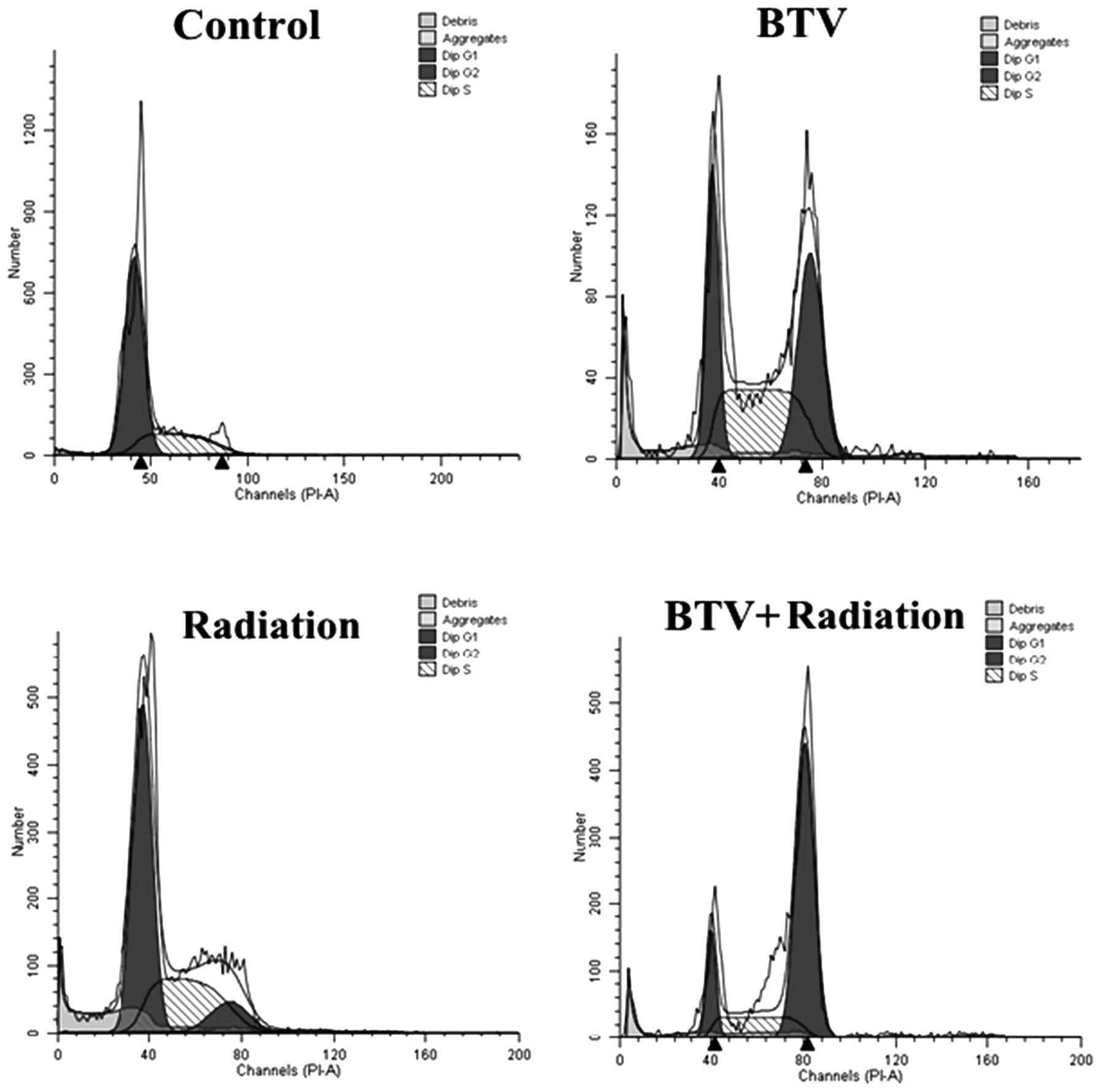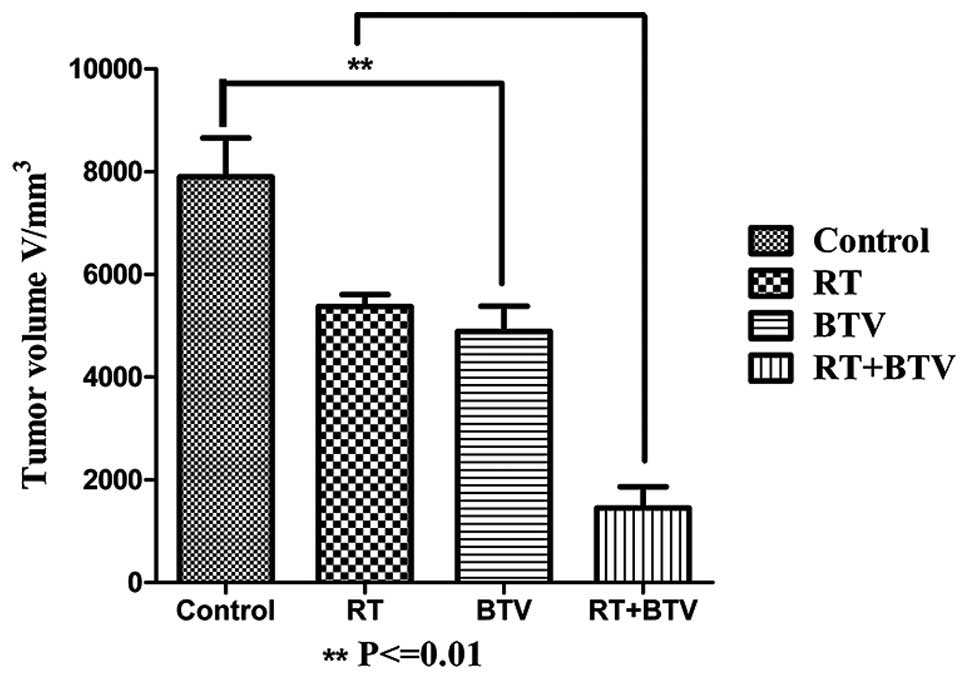Cytotoxic effect of a combination of bluetongue virus and radiation on prostate cancer
- Authors:
- Published online on: June 2, 2014 https://doi.org/10.3892/etm.2014.1751
- Pages: 635-641
Metrics:
Total
Views: 0 (Spandidos Publications: | PMC Statistics:
)
Total PDF Downloads: 0 (Spandidos Publications: | PMC Statistics:
)
Abstract
This study aimed to investigate the lethal effect of the combination of bluetongue virus (BTV) and radiation on RM‑1 murine prostate cancer cells in vitro and in vivo. Various cell lines were infected with BTV and the cytotoxicity was tested by a lactate dehydrogenase (LDH) release bioassay. Additionally, the RM‑1 cells were treated with radiation and/or BTV to assess cell viability using the Cell Counting Kit‑8 method. The levels of apoptosis of the RM‑1 cells were detected by fluorescence‑activated cell sorting (FACS). To identify a possible mechanism for the radiation‑induced change in the oncolytic activity of BTV, cell cycle analyses were performed. The effects of different schedules of BTV and radiotherapy on cytotoxicity were assessed in vitro and the combined effect was also assessed in tumor models in vivo. The results demonstrated that BTV had a selective cytotoxic effect on RM‑1 and PC‑3 cancer cells, but did not affect normal cells, specifically, human umbilical vein endothelial cells and smooth muscle cells. The combination of BTV and radiation enhanced the cytotoxicity compared with that of each agent alone and had a synergistic effect in vitro and in vivo. The results of the FACS confirmed that radiotherapy induced apoptosis, as did BTV alone, and the combination treatment generated the most prominent levels of apoptosis, which were the highest in the early stage. The analysis of the cell cycle indicated that the G2‑M phase levels increased after irradiation followed by infection with BTV. In conclusion, the combination of BTV and radiotherapy had an enhanced cytotoxic effect on RM‑1 cells in vitro and in vivo compared with that of either treatment alone, and demonstrated a synergistic efficacy, in addition to a marked apoptosis‑inducing effect. These results support the future investigation of BTV for potential clinical use in patients with prostate cancer.















